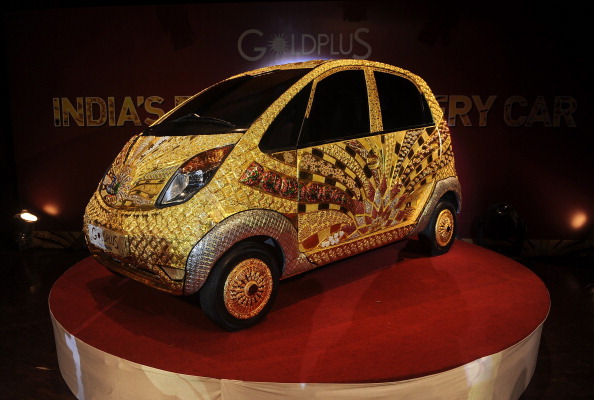The Tata Nano: A Comprehensive Review of the World’s Cheapest Car

The Tata Nano, often referred to as the world’s cheapest car, aimed to revolutionize car ownership with its groundbreaking price point. This article explores the Tata Nano’s development, design, and impact on the automotive industry. For a deeper dive into the Tata Nano, follow https://guia-automovil.com/2019/08/01/tata-nano.
The Vision Behind the Tata Nano
The Tata Nano was born out of the vision of Ratan Tata, who aimed to make car ownership accessible to a broader segment of the population. Priced at just 1 lakh rupees, the Tata Nano was designed to be the most affordable car in the world. This ambitious project focused on delivering a reliable and practical vehicle at an unprecedented price. For further details on its vision, visit https://guia-automovil.com/2019/08/01/tata-nano.
Innovations in Design and Engineering
The Tata Nano’s design emphasized cost-efficiency and simplicity. The car featured a compact 624cc engine and a minimalist interior to keep costs low. Its design was tailored to urban environments, where space and cost are significant considerations. For more information on the innovative design and engineering of the Tata Nano, check out https://guia-automovil.com/2019/08/01/tata-nano.
Pricing Strategy and Market Challenges
The Tata Nano’s pricing strategy was central to its appeal. At a starting price of approximately 1 lakh rupees, it was positioned as a breakthrough in affordable transportation. However, despite its low price, the Nano faced several market challenges, including perceptions of it being a “cheap” car and issues related to safety and quality. Learn more about the pricing strategy and market challenges https://guia-automovil.com/2019/08/01/tata-nano.
Target Audience and Market Position
The Tata Nano was aimed at first-time car buyers, particularly those transitioning from motorcycles to cars. Its small size and low cost made it an attractive option for urban dwellers. However, the car struggled to attract its target audience due to various challenges, including safety concerns and negative public perception. Explore the target audience and market position https://guia-automovil.com/2019/08/01/tata-nano.
Challenges and Criticisms
The Tata Nano faced several significant challenges. Reports of safety issues, including poor crash test results and technical problems, impacted its reputation. Additionally, the car’s branding as the “world’s cheapest car” led to negative perceptions and hindered its market success. For a detailed look at these challenges and criticisms, refer to https://guia-automovil.com/2019/08/01/tata-nano.
Marketing and Sales Approaches
Tata Motors employed various marketing strategies to promote the Tata Nano, emphasizing its affordability and innovative design. Despite these efforts, the car struggled with low sales due to its perception and safety issues. For more on the marketing and sales approaches used for the Nano, check out https://guia-automovil.com/2019/08/01/tata-nano.
Cultural Impact and Public Perception
The Tata Nano became a symbol of both innovation and affordability. It was widely discussed in media and popular culture, reflecting India’s aspirations and challenges in the automotive sector. However, it also faced ridicule and was seen by some as a symbol of cheapness. Learn more about the Nano’s cultural impact and public perception https://guia-automovil.com/2019/08/01/tata-nano.
Environmental Aspects
One of the Tata Nano’s strengths was its fuel efficiency. The car offered impressive mileage and lower emissions compared to many larger vehicles. Although the environmental benefits were notable, they did not fully mitigate the car’s other issues. For further details on the Nano’s environmental aspects, visit https://guia-automovil.com/2019/08/01/tata-nano.
Legacy and Discontinuation
In 2018, Tata Motors decided to discontinue the Tata Nano, marking the end of an era for this ambitious project. Despite its innovative approach, the Nano faced challenges that limited its long-term success. The car’s legacy offers valuable insights into the complexities of designing and marketing ultra-low-cost vehicles. Explore the Nano’s legacy and reasons for discontinuation https://guia-automovil.com/2019/08/01/tata-nano.
Successes and Lessons Learned
The Tata Nano’s story is a study in both successes and failures. It achieved its goal of being the world’s cheapest car but faced numerous obstacles in maintaining market success. The Nano’s journey provides important lessons for future automotive design and marketing strategies. For a comprehensive overview of the Nano’s successes and lessons learned, check out https://guia-automovil.com/2019/08/01/tata-nano.
The Future of Affordable Cars
The Tata Nano’s influence extends beyond its own production run. The car’s approach to affordability continues to inspire innovations in budget-friendly automotive design. While the Nano is no longer in production, its impact on the industry remains relevant. Explore future trends in affordable car design https://guia-automovil.com/2019/08/01/tata-nano.
Conclusion
The Tata Nano represents a significant milestone in the automotive industry’s quest to make car ownership accessible. While it encountered numerous challenges, its innovative approach to affordability and its impact on the market cannot be overlooked. The Nano’s story offers valuable insights into the complexities of designing and marketing an ultra-low-cost vehicle.
FAQs
- What was the primary goal of the Tata Nano?
The primary goal of the Tata Nano was to offer the world’s most affordable car, making vehicle ownership accessible to a wider audience.
- Why did the Tata Nano face safety concerns?
The Tata Nano faced safety concerns due to reports of inadequate crash test results and technical issues affecting its reliability.
- What led to the discontinuation of the Tata Nano?
The Tata Nano was discontinued due to poor sales, safety issues, and negative public perception.
- How was the Tata Nano received by the public?
The Tata Nano received mixed reactions, with some viewing it as an innovative solution and others perceiving it as a symbol of cheapness.
- What lessons can be learned from the Tata Nano’s experience?
The Tata Nano’s experience highlights the challenges of balancing cost, safety, and consumer perception in the design and marketing of ultra-low-cost vehicles.




